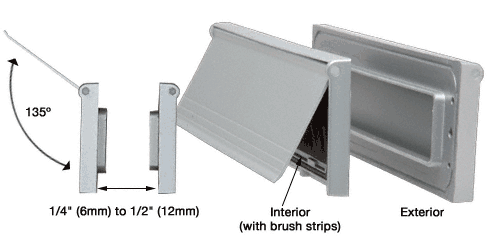
Download ★★★ DOWNLOAD
Download ★★★ DOWNLOAD
Mail Slot Crack + Free [Mac/Win]
Mail Slot Crack + [32|64bit]
MsgSend, MsgRead, MsgBroadcast:
– These routines implement the message API
– They wrap calls to a local service
Example:
Set msg = MsgSend(“winmail.dat”,”myaccount”,”youraccount”, “test message”)
Dim value As Integer = MsgRead(msg)
MsgBroadcast(msg)’send to all windows
MsgClose(msg) ‘close window
MsgReadMsgClose:
– closes the window, deletes the mailbox and deletes the mailbox entry
– gives an error if there was an error reading the message
– You must delete the mailbox entry if you delete the mailbox
– You must delete the mailbox entry if the mailbox is closed
MsgCloseMsgClose:
– closes the mailbox
– deletes the mailbox entry if there is one
MsgOpen:
– create a mailbox
– returns the mailbox name
– returns error code if it failed
MsgGetNames:
– retrieves the names of all Mail Slots
MsgGetAllNames:
– retrieves the names of all Mail Slots and adds them to an array
MsgOpenMsgGetNames:
– Creates the mailbox, returns the mailbox name, and returns the list of names.
– Just like the Winmail.dat command line program
MsgGetBlockedNames:
– Retrieves the names of blocked mailboxes
MsgOpenFromBlocked:
– Creates the mailbox, returns the mailbox name, and sets the blocked flag on the mailbox.
– If the mailbox already exists, this function does nothing and returns OK
MsgReadMsgGetBlocked:
– Returns the names of the blocked mailboxes
MsgCloseMsgGetBlocked:
– Deletes the blocked mailboxes
– gives an error if there was an error reading the message
– the names are already deleted and a ‘Deleted’ string is returned
MsgGetBlockedMsgGetBlocked:
– Returns the names of the blocked mailboxes and adds them to an array
MsgCloseMsgGetBlocked:
– Deletes the blocked mailboxes
MsgDeleteBlocked:
– Delete the blocked mailboxes
MsgCloseBlocked:
– Delete the blocked mailboxes
MsgCloseBlockedMsgClose:
– Deletes the blocked mailboxes
MsgOpenMsgDelete:
– Creates the mailbox, returns the mailbox name, and returns the list of names.
– Just like the Winmail.
2edc1e01e8
Mail Slot Crack+ License Code & Keygen [Latest] 2022
What’s New In?
Mail Slot components are designed to create simple applications for communicating using the Windows IPC services.
A Mail Slot component is made up of three essential elements:
A Server component which runs on a single computer, creates a Mail Slot and listens for messages on the Mail Slot. Messages are sent to a Mail Slot in the form of datagrams.
A Client component which runs on another computer, opens a Mail Slot and listens for incoming datagrams. It waits for datagrams to arrive from the Server.
The Handler component which reads and writes to the Mail Slot. It takes a message from the Client and delivers it to the Server.
A Simple Mail Server application is demonstrated with the Server component, the Client component and the Handler component.
A client program creates a Mail Slot. It then creates a Handler component, and a Server component. The Handler component takes a message and sends it to the Server component. The Server component then writes the message to the Mail Slot.
Note that the Mail Slot components are designed for creating simple client-server applications. More complex applications can be built using other, more advanced techniques, such as the ActiveX technology, but using the Mail Slots is easier.
Mail Slot VB6 API Information:
The MailSlot API exposes a variety of objects and methods to use Mail Slots. They are listed in the “MailSlot” VB6 API Properties dialog.
MailSlot’s should be listed when you select “Other windows components” in the “Com-Tail” group on the “General” tab of the project’s properties.
MailSlot’s should be listed when you select “Others” in the “Package” group on the “General” tab of the project’s properties.
MailSlot’s should be listed when you select “Other windows components” in the “Com-Tail” group on the “Project” tab of the project’s properties.
MailSlot’s should be listed when you select “Others” in the “Package” group on the “Project” tab of the project’s properties.
MailSlot’s should be listed when you select “Other windows components” in the “Com-Tail” group on the “Package” tab of the project’s properties.
MailSlot’s should be listed when you select “Others” in the “Package” group on the “Project” tab of the project’s properties.
MailSlot’s should be listed when you select “Other windows components” in the “Com-Tail” group on the “Package” tab of the project’s properties.
MailSlot’s should be listed when you select “Others” in the “Package” group on the “Project” tab of the project’s properties.
MailSlot’s should be listed when you select “Other windows components” in the “Com-Tail” group on the “Package” tab of the project’s properties.
MailSlot
https://new.c.mi.com/th/post/1456990/Download_PATCHED_Hitachi_79_Unlock_Cd
https://tealfeed.com/unlock-fast-sex-xstoryplayer-without-completing-bh5mt
https://new.c.mi.com/th/post/1457957/Phir_Teri_Kahani_Yaad_Aayi_Full_Movie_English_Torr
https://joyme.io/supprifia
https://techplanet.today/post/samurai-deeper-kyo-anime-hot-download-torrent
https://new.c.mi.com/th/post/1456511/Psycho_Pinball_Classic_DOS_Game_100_DOSBOX_Compati
https://techplanet.today/post/milf-named-meg-450-pics-rar
https://techplanet.today/post/torrentcarteeuropemedianav-1
https://techplanet.today/post/psych-season-1-720p-download-37-best
https://reallygoodemails.com/contcumzdeso
https://new.c.mi.com/my/post/633537/The_Complete_Manual_Of_Suicide_By_Wataru_Tsurumi_Z
https://new.c.mi.com/my/post/633542/Computer_Networking_A_Top_Down_Approach_6th_Editio
https://new.c.mi.com/my/post/631785/Yugandhar_Marathi_Novel_Download_CRACKED_223
https://new.c.mi.com/my/post/631780/Eyes_Wide_Shut_Movie_Download_In_Hindi_VERIFIED
https://techplanet.today/post/highspeed-3dsimed-install-crack
System Requirements:
Minimum
OS: Windows XP Service Pack 3, Windows Vista Service Pack 2, Windows 7, Windows 8, or Windows 8.1 (32-bit or 64-bit versions)
Processor: Intel Core2 Duo E6700 or AMD Athlon X2 2.6GHz or faster, 2GHz or faster
Memory: 2 GB RAM
Video: NVIDIA GeForce GTX 400 series, ATI Radeon HD 5000 series or better
DirectX: Version 9.0c
Hard Drive: 6 GB available space
Additional Notes: The Minimum requirements
https://keystonecase.org/google-translate-client-13386-crack-latest/
http://crossroads-bv.nl/?p=6008
https://eneohii.com/wp-content/uploads/2022/12/rozblan.pdf
https://huntershineson.com/wp-content/uploads/2022/12/Oracle-Permission-Generator-Crack-License-Code-Keygen-For-Windows.pdf
https://grxgloves.com/origin-balance-3264bit/
https://www.webcard.irish/flash-maker-and-converter-suite-crack-free-download-latest-2022/
https://psychomotorsports.com/snowmobiles/92340-ultraexplorer-crack-with-full-keygen/
https://idventure.de/wp-content/uploads/2022/12/Fun-Search-Film-Crack-Registration-Code-March2022.pdf
http://www.bevispo.eu/wp-content/uploads/2022/12/jansil.pdf
https://mmsshop.ro/wp-content/uploads/2022/12/hanfab.pdf